
Whether or not a plant will catch on fire, keep a fire going, and then propel a fire is determined by its physical characteristics. Less flammable plants, those considered fire retardant or fire resistant, share certain physical characteristics. Getting to know these characteristics is fundamentally more important than remembering plants lists.
- Deciduous plants are less flammable than evergreens.
- Broadleaf plants are less flammable than those with needle and blade like leaves.
- Moist and easily bent leaves are less flammable than stiff and leather like leaves.
- Thick leaves are less flammable than fine or thin leaves.
- Plants that produce a low amount of litter are less flammable than those that produce a lot of litter.
- Plants with sap that looks more like water are less flammable than plants with thick, gummy or resinous sap.
- Plants without fragrance are less flammable than plants with aromatic qualities.
- Plants with silver or gray leaves, which have a high mineral and ash content, are less flammable that those without. However, some plants, such as the highly ignitable native fragrant sages, do not follow this rule.
- Plant leaves without hair (cilia) are less flammable than those with hair, including the underside of leaves.
A more or less flammable plant is directly related to its amount of stored moisture and fuel. Ice plant and pine represents the two opposite extremes of flammability.
Every recommended plant can catch on fire. The ability of any of these plants to retard or resist a fire depends on their condition. Any plant that is over-aged, water stressed, infested by pests or improperly cared for is more flammable as a consequence. Truly, landscape maintenance is the fulcrum of fire safety and not plant selection.
|
Legend d = Deciduous. D = Deer resistant. The eating habits of deer vary according to the type of landscape, the season and environmental influences. Some of the plants recommended may be eaten by deer, but have a lower likelihood than other plants. Deer dislike plants with strong odors and fine leaves, typically flammable plants. E = Erosion controlling plant. A plant capable of slowing erosion protects the soil from the effects of water, wind and gravity. An erosion controlling plant may have one or more of the following characteristics; growth that lays on top of the soil, many surface roots, and/or produces a lot of litter S = Good screen or wind break. A well maintained screen can block wind, unwanted views and even fire. During a fire a planted screen can act as a barrier to flying embers and slow the speed of wind. Importantly, any plant that is repeatedly sheared builds up a twiggy interior and becomes increasingly flammable over time. spp. = Half or more of the recommended species in a genus possesses the same characteristics. For example, Geranium spp., which is a Zone 1 ground cover, means that all of the true geraniums can used as a ground cover in Zone 1. W = Water thrifty plant. This is a relative symbol and can mean no summer water, infrequent summer water, or watering only every two weeks in summer, as in the case of many ground covers. Note: Picking plants that are able to withstand a garden’s climatic extremes is important to the garden’s flammability, especially in zones 2 and 3. Included with this list are brief descriptions of each plant’s particular tolerances. |
Firescaping Zones
Plants within the first 30 feet of a structure are the most fire retarding; they might sizzle and wilt during a fire but will never produce a flame. Fire-retardant plants can catch and help extinguish firebrands. Maintenance is essential in the first 30 feet, and these plants require water, resources, and time. See Zone 1 Plants.
Further out from a structure, fire-retarding plants give way to fire-resistant plants. This group requires much less water and care, yet can still maintain a high degree of fire resistance. Many of these plants also quickly resprout after injury, helping to reduce the chances of topsoil loss after a fire. See Zone 2 Plants.
See Fine Gardening’s interview with Douglas Kent for more information on firescaping and recovering from wildfire.
Firescaping Plants Lists
Zone 1: The Garden Zone / Defensible Space
Extending 30 feet from a house, the garden zone is capable of withstanding flying embers and intense heat. Plants selected in this zone have fleshy, moist and broad leaves. Trees are preferably deciduous. This is the only zone that plants can be water, nutrient and labor dependent.
Zone 1
Ground Covers Perennials Shrubs Trees Vines
or see Zone 2 Plants
* These plants are listed as invasive in some areas of the United States. Please check before planting these plants that you are not in an affected area.
GROUND COVERS
| Common Name | Botanical Name | |
|
Lawn grasses: bent, Bermuda, blue, fescue, rye, St. Augustine |
*Agrostis, *Cynodon, *Poa, *Festuca, Lolium, Stenotaphrum
|
|
| Carpet bugle | Ajuga spp. | Will freeze, but with shade and water, can grow anywhere. / D |
| Alyssum | Alyssum spp. | Not sweet alyssum. Grows throughout Cal. / W |
| Wild ginger | Asarum caudatum | Can take a freeze, not intense heat. / D |
| Bell flower | Campanula spp. | Can tolerate a freeze, not intense heat. / D |
| Dwarf plumbago | Ceratostigma plumbaginoides | Grows throughout Cal, except in deserts. / D, W |
| Chamomile | Chamaemelum nobile | Tough. Good lawn substitute. Grown throughout Cal. / D, W (somewhat) |
| Cranesbill | Erodium | Can tolerate frost, not desert conditions. Prefers coast. / D |
| Creeping, sheep, and tall fescue | Festuca spp.* | Grown throughout Cal. / D, E, W |
| Clumping gazania | Gazania (clumping) | Dislikes freezes and long, wet winters. / D |
| Cranesbill | Geranium spp.* | Hardy. Grown throughout Cal. G. incanum prefers mild coast. / D |
| English ivy, Hahn’s and smaller-leafed varieties | Hedera helix, H. ‘Hahn’s’, H. ‘Needlepoint’* | Grows everywhere but high mountains and high desert. / D, E, W |
| Blue star creeper | Isotoma fluviatilis | Grown everywhere but in desert. / D |
| Bird’s foot trefoil | Lotus corniculatus* | Tolerates tough conditions. Goes dormant in extreme winters. |
| Ivy geranium | Pelargonium peltatum | Can hold a slope on the coast. Good performer in mild climates. / E |
| Potentilla, spring cinquefoil | Potentilla tabernaemontanii | Needs protection from extremes. / D |
| Irish moss, Scotch moss | Sagina subulata | Grows everywhere but desert. / D |
| Mauve clusters | Scaevola* | Prefers mild, coastal climates, avoid extremes. / D, W |
| Giant inch plant | Tradescantia albiflora | Aggressive in light shade and can survive freezing and any amount of heat. / D |
| Nasturtium | Tropaeolum spp. | Thrives along coast. Has naturalized in parts. / D |
| Veronica, speedwell | Veronica spp. | Versatile enough for every garden. / D |
| Periwinkle | Vinca spp*. | Grown anywhere but high elevations. V. minor needs more shade in hot, dry summers. / D |
| Viola | Viola odorata | Prefers the mild coast. Will naturalize in wet winters. / D |
| Zoysia | Zoysia spp. | Lawn substitute. Likes a sunny summer, not freezes and long winters. / D |

PERENNIALS
| Bear’s breech | Acanthus mollis | Durable plant. Grows everywhere but in snow. / D, W |
| Lily of the Nile | Agapanthus spp. | Durable everywhere but in the high desert and high mountains. / D (somewhat), W | |
| Sea pink, thrift | Armeria spp. | Grows throughout Cal. Performs best by coast. / D | |
| Angel’s hair | Artemisia schmidtiana | Grown throughout Cal. / D, W | |
| Bergenia | Bergenia spp. | Tolerates everything but desert’s heat. / D, W | |
| Canna | Canna | A tropical best at or near the coast. / D | |
| Dusty miller | Centaurea cineraria, C. gymnocarpa, Chrysanthimum ptarmic, Lychnis coronaria, Senecio cineraria | Varies according to variety. Consult local nursery. / D, W | |
| White marguerite | Chrysanthemum frutescens | Thrives anywhere along coast. Dislikes extremes. / D | |
| Shasta daisy | Chrysanthemum maximum | A reliable performer, almost everywhere. / D | |
| Coreopsis | Coreopsis spp. | Excellent color for central and southern coast. / W (a few varieties) | |
| Foxglove | Digitalis spp.* | As an annual, it grows throughout Cal. In woodland areas along central and northern coast, it can naturalize. / D | |
| Wall flower | Erysimum linifolium | Requirements vary with species. / D, W | |
| Euryops | Euryops spp. | Prefers coastal influence. Dislikes deserts with a prolonged freeze. / D, S, W | |
| Ferns | Ferns | From natives to introduced ferns, hundreds of varieties. / D | |
| Day lilies | Hererocallis spp. | Easy plant to grow anywhere. Tuberous and pest free. / D, W | |
| Coral bells | Heuchera sanguinea | Grown throughout Cal. /D | |
| Hosta | Hosta spp. | Better in climates with pronounced winters. Used for foliage. / D | |
| Impatiens | Impatiens spp. | Likes mild coastal climates. / D | |
| Toadflax | Linaria purpurea | Easy to grow anywhere. / W | |
| Lily turf | Liriope and Ophiopogon spp. | Prefers environments influenced by coast. / D | |
| Mallow | Malva spp.* | Grown throughout Cal. Short lived. | |
| Geranium | Pelargonium spp. | Performs best by beach. Tough to grow in extremes. Dependable color. | |
| Garden penstemon | Penstemon gloxiniodes, P. newberryi, P. pinifolius | Widely used in Cal. Annual in cold winter areas / D, W | |
| Philodendron | Philodendron spp. | A hardy tropical. Prefers southern coast. / S | |
| New Zealand flax | Phormium spp. | Can take extremes in heat, not cold. / D, S, W | |
| Lambs’ ears | Stachys byzantina | The shorter the winter, the better. / D | |
| Bird of paradise | Strelitzia spp. | A tropical that dislikes cold. Thrives along southern coast. / D (sometimes), W | |
| Calla | Zantedeschia spp.* | Grown everywhere but desert and high elevations. Will naturalize in wet winter climates. / D | |
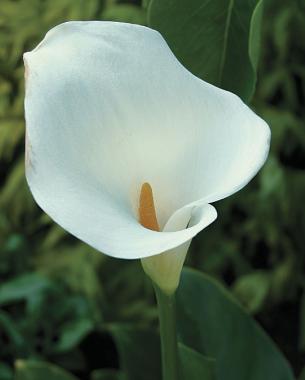
SHRUBS
| Yesterday, today, and tomorrow | Brunfelsia pauciflora calycina | Prefers coast, requires shade inland. |
| Camellia | Camellia spp. | Likes humidity and dislikes extremes. C. sasanqua can tolerate more heat and sun. / D, S |
| Mirror plant | Coprosma spp. | Tough in mild winters. / D, E, S, W |
| Escollenia | Escollenia spp. | Prefers coastal influence. Dislikes extremes. E. illinita has resinous fragrance and should be avoided. / S, W |
| Gardenia | Gardenia jasminoides | Prefers drier seasons, no frost. |
| Tropical hibiscus | Hibiscus rosa-sinensis | Prefers coastal humidity. / S |
| Privet | Ligustrum spp.* | With water it can grow in anything but snow. / S |
| Mock Orange | Philadelphus spp. | Only P. mexicans likes southern coast. The rest prefer a freeze. / S |
| Photinia | Photinia fraseri | Grows everywhere but areas with hard freezes, snow. / S, W |
| Pittosporum | Pittosporum crassifolium*, P. tobira, P.tobira ‘Wheeler’s Dwarf’ | Prefers areas with coastal influence, fussy in extremes. / E, S, W |
| India hawthorn | Rhaphiolepis spp. | Can tolerate mild freezes, likes sun. Hard to grow in high desert and in long, wet winters. / S, W |
| Rhododendron / Azalea | Rhododendron / Azalea spp. | Fantastic range, found throughout Cal. / D (not azaleas), S |
| Rose | Rosa spp. | Grown throughtout Cal. / S (some) |
| Lilac
Brush cherry |
Syringa spp.*
Syzyguim paniculatum |
Performs best in areas with a pronounced winter. Risky along central and southern Coasts. / D, S, W (somewhat)
Grown in any frost free landscape. Small tree if not pruned. / S |
| Yellow oleander | Thevetia peruviana | Will thrive in any amount of heat and sun, but a frost will hurt it. / D, S, W |
| Evergreen huckleberry | Vaccinium ovatum | Native to north and central coast. Likes a mild climate, dislikes extremes. |
| Chinese snowball | Viburnum macrocephalum | Good everywhere but deserts. / S, W (somewhat) |
| Japanese snowball | Viburnum plicatum* | See above |
| Xylosma | Xylosma | Good everywhere but high elevations. / E, S, W |
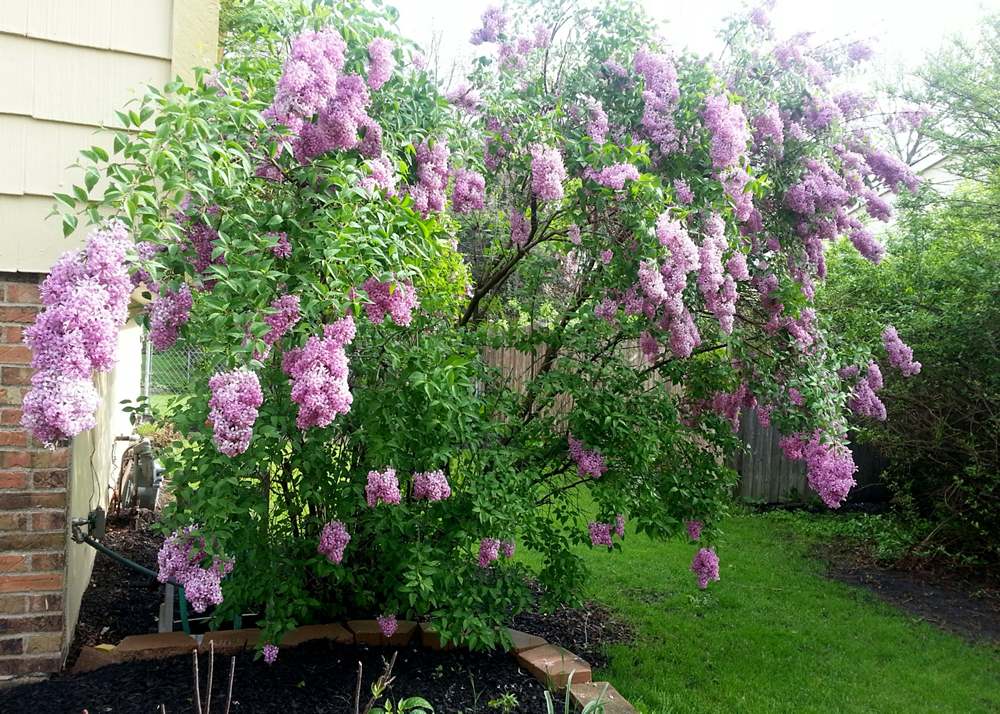
TREES
| Fruit trees | Apple, apricot, cherry, lemon, lime, nectarine, orange, pear, persimmon, plum, prune, tangerine
|
|
| Maple | Acer spp.* | d – Prefers north, central coasts and desert. Southern Cal stunts growth of all except A. palmatum. / D, somewhat W |
| Birch | Betula spp. | d – Somewhat tolerant of freeze, not the desert’s heat. |
| Redbud | Cercis spp. | d – Everywhere but highest elevations. / D |
| Dogwood | Cornus spp. | d – Grown throughout Cal. |
| Dragon tree | Dracaena draco | Likes sunny and mild central and southern coast. |
| Pineapple guava | Feijoa sellowiana | Tolerates any amount of heat, dislikes freezes and soupy coastal conditions. / S, W |
| Ficus | Ficus spp*. | Grown through Cal. / D (some), S, W (some) |
| Ash | Fraxinus spp. | d – There is a variety that will grow in your garden. / D, W |
| Griselinia | Griselinia spp. | Hard to grow in freezes and deserts. / S |
| Crape myrtle | Lagerstroemia indica* | d – Needs definite seasons. The hotter the summer, the better. A prolonged freeze will kill it. / D, W |
| Sweet gum | Liquidambar spp. | d – Likes all but desert heat. The more pronounced the seasons, the better fall color. / D |
| Magnolia | Magnolia spp. | Prefers mild, coastal climates. / D, S |
| Crabapple | Malus spp. | d – Can tolerate a lot of heat, needs a chilly winter to perform. |
| Mayten tree | Maytenus boaria | Needs distinct seasons, but dislikes the extremes of either. / D, S, W (somewhat) |
| Michelia | Michelia spp. | Prefers southern coast. Does well in fog. |
| Palms | Palms | Only if kept clean are they less flammable. Although an enormous family, palms generally dislike a freeze. / D, S (some), W (some) |
| Pittosporum | Pittosporum eugenioides, P. rhombifolium, P. undulatum | Prefers coastal climate. Fussy in extremes. / S (excellent), W |
| Podocarpus | Podocarpus spp. | Prefers coastal climate. / D, S |
| Ornamental pear | Pyrus spp*. | d (some) – Deciduous varieties grow everywhere but in desert. Evergreen varieties dislike a freeze, prefers coast. / W |
| California pepper tree | Schinus molle* | Versatile, but dislikes extremes of deserts and mountains. / D, W |
| Brazilian pepper tree | Schinus terebinthifolius* | Not as hardy to extremes as S. molle. Prefers coast. / D |
| Giant bird of paradise | Strelitzia nicolai | Grown along coast, and low deserts. Can not take a frost. / D, S, W |
| Tupidanthus | Tupidanthus calyptratus | A tropical that likes sunny central and southern coasts. / S |

VINES
| Trumpet vine | Campsis spp. | d – Hardy vine in cold winter, needs a chill. Aggressive. / D, W |
| Clematis | Clematis spp. | d – Best performance and selection along the Northern Coast. / D, W |
| Trumpet vine | Distictis spp. | Although it will tolerate lows to 24 degrees, it does better along coast. |
| Grape | Grape | d – Grows well in both heat and freeze. Seek local references for best variety. |
| Creeping fig | Ficus pumila | Lows below 28 degrees will cause die-back. Can take any amount of heat. Durable. / D, W |
| Guinea gold vine | Hibbertia scandens | Best along Southern Coast. Dislikes even a light frost. But grown along entire coast with some success. / D, W |
| Jasmine | Jasminum spp.* | d (some) – Grown everywhere but in extremes. / D |
| Bower vine | Pandorea jasminoides | Prefers the Southern Coast. No wind. / D |
| Boston ivy | Parthenocissus tricuspidata* | Its evergreen in mild winters. Likes shade in desert. |
| Pink trumpet vine | Podranea ricasoliana | Thrives in heat, but will drop leaves in frost. / W |
| Shrub rose | Rosa (polyanthas) | d – Grown successfully throughout Cal. |
| Star jasmine | Trachelospermum jasminoides* | Prolonged freezes will kill it. Grows everywhere else. |
| Wisteria | Wisteria spp.* | d – Grown everywhere. Regular pruning will help flower production and appearance. / D, W |
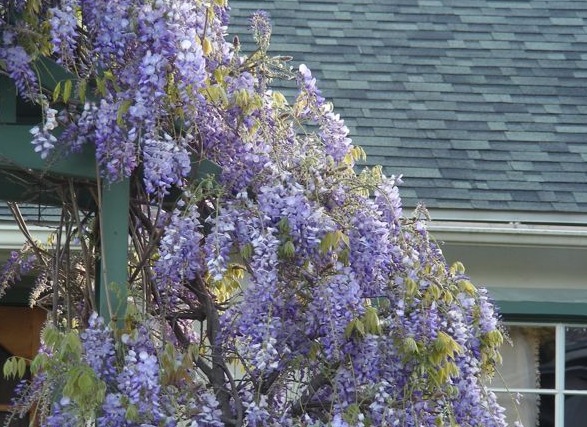
*These plants are listed as invasive in some areas of the United States. Please check before planting these plants that you are not in an affected area.
Zone 2: The Greenbelt / Fuel Break
Extending 31 feet from a structure to 70 feet, and much further on slopes, this zone will stop a ground fire. Plants recommended in zone 2 are considered the most fire retardant because they maintain low fuels and high moisture despite droughts, freezes, infestations and possible neglect. Trees and shrubs are kept isolated and only used to serve a variety of functions, such as privacy, heat and cold reduction and wildlife enhancement. Ground covers grow no higher than 18 inches. Picking plants that are compatible with the naturally occurring conditions is critical to the success of this zone.
Zone 2
Ground Covers Perennials Shrubs Trees Vines
GROUND COVERS
Succulents
As a general rule, succulents and cactus dislike a freeze and most do not thrive in the desert’s summer heat. Most succulents and cactus prefer California’s coast. Only a few of these plants will survive after fire. When succulents and cactus can be successfully grown, there is no better plant at retarding a fire.
| Aeonium | Aeonium simsii | Prefers sunny coastal climate, dislikes extremes. / W |
| Aloe | Aloe aristata, A. ciliaris, A. distans, A. saponaria | Tolerates any amount of heat, but sensitive to frost. Easy to grow in right conditions. / D, W |
| Ice plant | Carpobrotus spp.* | Will die back in freezes. C. chilensis is native to coast, good in sand. / W |
| Crassula | Crassula corymbulosa, C. lactea, C. lycopodiodes, C. multicava, C. shmidtii | Grown along entire coast. Needs protection from frost. / W |
| White trailing ice plant | Delosperma spp. | Grown anywhere with mild winters. / W |
| Rosea ice plant | Drosanthemum spp. | Prefers coastal climates. D. floribundum is the best for erosion control. / D, E, W |
| Hens and chicks | Echeveria elegans, E. imbricata, E. secunda | Grows in only the coast and other mild and sunny situations. |
| Ice plant | Lampranthus spp. | More versatile than most, but still dislikes the extremes of cold and heat. / W |
| Ice plant | Malephora spp.* | Dislikes a pronounced winter, but can tolerate desert’s heat. / W |
| Stonecrop | Sedum acre, S. album, S. anglicum, S. confusum, S. lineare, S. spathulifolium | Although species vary in hardiness, they are typically tougher than most succulents. / W |
| Senecio | Senecio mandraliscae, S. serpens | Needs protection from frost. Tolerates any amount of heat. |
Non-Succulent Ground Covers
| Greek yarrow | Achillea ageratifolia | Grown throughout Cal with little difficulty. / D, W |
| Silvery yarrow | Achillea clavennae | Grown throughtout Cal. Low growing. / D, W |
| Woolly yarrow | Achillea tomentosa | Grown throughout Cal. Many uses. / D, W |
| Silver beachweed | Ambrosia chamissonis | Prefers the northern and southern coasts. / W |
| Rockcress | Arabis spp.* | Cal rockcress is native to the northern coast. All others need a pronounced winter. / W |
| Cape weed, silver spreader | Arctotheca calendula* | Can take a light freeze. Prefers the coast. / D, E, W |
| Silver spreader | Artemisia caucasica | Grows everywhere. Tolerates extremes. / D, E, W |
| Australian saltbush | Atriplex semibaccata* | Dislikes extremes. Tough plant for tough conditions in mild climates. / D, E, W |
| Basket of gold | Aurinia saxatilis | Grown everywhere but in extreme winters. / W (somewhat) |
| Snow in summer | Cerastium tomentosum* | Grows throughout Cal. Sometimes short lived. / D, W |
| Sageleaf rockrose | Cistus salviifolius | Thrives along northern and southern coasts. OK in hot summers. Dies back at 15°F. / D, E, W |
| Ground morning glory | Convolvulus mauritanicus | Tolerates any amount of heat. Prefers mild winter areas. / W |
| Coprosma | Coprosma kirkii, C. pumila | Very durable in mild winters. / D, E, W |
| Tickseed | Coreopsis auriculata ‘Nana’ | Tolerates heat. Dislikes a prolonged frost. Best along coast, North and South. / W |
| Bearberry cotoneaster | Cotoneaster dammeri | Hardy everywhere but in snow. / D (somewhat), E, W |
| Indian mock strawberry | Duchesnea indica | Grown throughout Cal. |
| Santa Barbara daisy, seaside daisy, fleabane | Erigeron spp.* | Can take a frost, but prefers coast. Two species native to coast. / D, W |
| Prostrate mirror plant | Euonymus fortunei* | Tough. Prefers seasons of heat and frost. / D, E, W |
| Wild strawberry, wood strawberry | Fragaria chiloensis* / F. californica | Native to Pacific Coast. Needs water further inland. / D, W (at coast) |
| Trailing gazania | Gazania (trailing) | No hard freezes or long, wet winters, but everywhere else, deserts included. / D, W |
| Prostrate myoporum | Myoporum parvifolium | Likes a coast and heat. Dislikes extremes. / D, E, W |
| Evening primrose | Oenothera spp.* | Grown everywhere. Not fussy. / D, W |
| African daisy, freeway daisy | Osteospermum fruticosum | Tolerates heat, but a prolonged freeze will do it in. Sometimes short lived, 3–6 years. / D, E (somewhat), W |
| Lippia | Phyla nodiflora | Can tolerate heat, but not a lot of cold. / D, W (somewhat) |
| Germander | Teucrium chamaedrys ‘Prostratum’, T. cussonii | Grows throughout Cal. / D, W |
| Strawberry clover | Trifolium fragiferum | Will grow everywhere but in areas with hard freezes. If watered, it is a good lawn substitute. / D, E, W |
| White clover | Trifolium repens* | Grows everywhere. Able to fixate nitrogen. / W (somewhat) |
| Verbena | Verbena peruviana | Grown everywhere but highest elevations. Prefers dry heat. / D, W |
| Moss verbena | Verbena pulchella gracilior, V. tenuisecta | Prefers dry heat. Dislikes high elevations. / W |

PERENNIALS
| Fernleaf yarrow | Achillea filipendulina* | Grown throughout Cal. / D, W |
| Common yarrow, milfoil | Achillea millefolium* | Grown throughout Cal. Most common. / D, W |
| Yarrow | Achillea ptarmica* | Grown throughout Cal. / D, W |
| Dusty miller | Artemisia stellerana | Better in cold winters than other dusty millers. / D, W |
| Coastal chrysanthemum | Chrysanthemum hosmariense | As the name suggests, it prefers a coastal garden. |
| Coastal coreopsis | Coreopsis maritima | Native to the southern coast. Will naturalize at home. / D, W |
| African iris | Dietes bicolor | Thrives along entire coast and Central Valley. Dislikes extremes. / D, W |
| Fortnight lily (Moraea) | Dietes vegeta | Same as above. |
| California poppy | Eschscholzia californica* | Grows everywhere. / D, E, W |
| Euphorbia | Euphorbia characias, E. myrsinites*, E. rigida | Wide range. Will tolerate most environments but not snowy elevations. / D, W |
| Gaura | Gaura lindheimeri | Grown throughout Cal. Prefers pronounced summers. / W |
| Island alum root | Heuchera maxima | Native to Channel Islands. Likes heat, but not frost. / W |
| Evergreen candytuft | Iberis sempervirens | Good performer in coastal environments. |
| Red hot poker | Kniphofia uvaria* | Can tolerate extremes but not deserts. / D, W |
| Sea lavender, statice | Limonium latifolium, L. perezii | Takes any amount of heat and is hardy to 23°F. / W |
| Parrot’s beak | Lotus berthelotii | Prefers climates by ocean and thermal belts. Dies back in cold weather. |
| Lupine | Lupinus spp.* | Native to moister coastal regions. / D, E (some), W |
| Crown-pink, dusty miller | Lychnis coronaria | Grown throughout Cal. Easy along coast. |
| Hooker’s evening primrose | Oenothera hookeri | Native. A hard frost will kill it. / D, W |
| Silver mound | Plecostachys serphyllifolia* | Prefers mild climate. Dislikes desert and high elevations. / D, W |
| Silver sage | Salvia argentea | Grows throughout Cal. Likes sun. / D, W |
| Yucca | Yucca harrimaniae | Grown everywhere. / D, W |
| Grass tree | Xanthorrhoea spp. | Used along coast and in mild climates. / D, W |
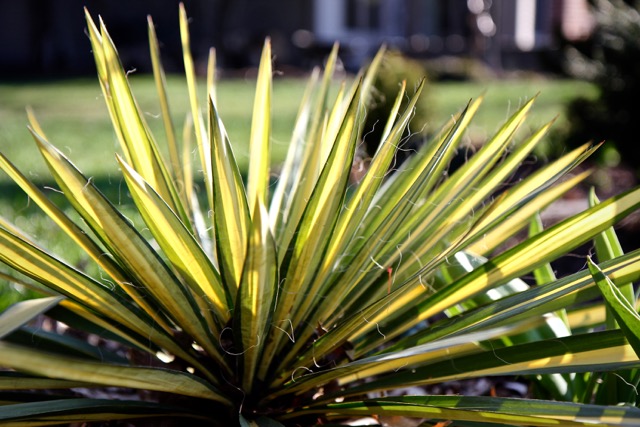
SHRUBS
Succulents
| Aeonium | Aeonium spp. | Prefers ocean influence. Dislikes extremes. |
| Agave | Agave spp. | Tolerances vary with species. Most, however, will die back in a freeze. Prefers sunny coast. / D, W |
| Aloe | Aloe arborescens, A. bainesii, A. striata, A. variegata, A. vera | Best suited for sunny Central and Southern Cal. |
| Saguaro | Carnegiea gigantea | Tolerates any amount of heat. Dislikes anything but a mild freeze. Does not grow directly on coast. / D, W |
| Cotyledon | Cotyledon spp. | Thrives along a sunny coast. Dislikes extremes, including heat. / W |
| Jade plant | Crassula arborescens, C. argentea, C. falcata | Likes sunny coast. Needs protection from frost. / W |
| Spear lily | Doryanthes palmeri | Prefers sunny coast. Dislikes extremes. |
| Cliff lettuce | Dudleya spp. | Native to coastal cliffs and hills. Likes sunny, mild climates. / W |
| Echeveria | Echeveria gibbiflora, E. hybrids | Likes sun, but not extremes. Related to hens and chicks. / W |
| Barrel cactus | Echinocatus spp. | Tolerates lows to 20°F and any amount of heat. / D, W |
| Easter lily cactus | Echinopsis spp. | Needs protection from frost and intense heat. / W |
| Barrel cactus | Ferocatus spp | Adapted to desert, not high elevations or wet coast. / D, W |
| Haworthia | Haworthia spp. | Tolerates a frost, but not a freeze. / D, W |
| Prickly pear, pancake cactus | Opuntia spp.* | Likes heat. Will die back during an extended frost. / D, S, W |
| Sedum | Sedum dendroideum, S. dendroideum subsp. praealtum, S. oxypetalum, S. spectabile, S. telephium | Although species vary in hardiness, they are typically tougher than most succulents. / W |
Non-Succulent Shrubs
| Saltbush | Atrilplex spp. | Dislikes extremes. Tough plant for tough situations in mild climates. / D, E, W |
| Orchid rockrose | Cistus purpureus | Thrives in climates influenced by the ocean in both north and south. Dies back at 15°F. / D, E, W |
| Bush morning glory | Convolvulus cneorum | Prefers a mild winter and heat. / D, W |
| Tree grass, desert spoon | Dasylirion spp. | A native that prefers dry heat and mild winters. / D, W |
| Sunrose | Helianthemum nummularium | Grown in all areas without hard freeze. / W |
| Tree mallow | Lavatera assurgentiflora | Native to Channel Islands. Likes heat and sun. Dislikes extremes. / W |
| Texas ranger, silverleaf
Myoporum |
Leucophyllum spp.
Myoporum debile, M. ‘Pacificum’ |
Grown throughout Cal, except in extreme winters. / D, S, W
Likes a coastal influence and heat. Dislikes extremes. / D, E, S, W |
| Oleander | Nerium oleander* | Likes heat and tolerates mild freezes. Dislikes shade and dampness. / D, S, W |
| Mexican grasstree | Nolina spp. | Native to desert and grown anywhere West and South of its home. / D, W |
| Dwarf pomegranate | Punica granatun* ‘Chico,’ ‘Nana’ | Does well in long summers. Tolerates a mild freeze. Tough. / D, W |
| Lemonade berry | Rhus integrifolia | Native to the southern coast. Prefers the coast. Dislikes extremes. / D, E, S, W |
| Sugar bush | Rhus ovata
|
Native to dry southern foothills. Better at extremes than other species. / D, S, W |
| Jojoba | Simmondsia chiensis | Native to southern deserts. Takes any amount of heat. Dislikes freezes. / D, S, W |
| Our Lord’s candle | Yucca whipplei | Native to the southern coast and hills. Tolerates a wide range of climates, except high elevations. / D, W |
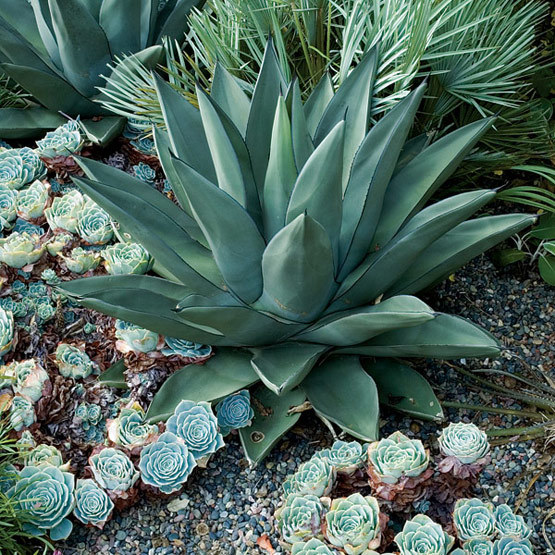
TREES
| Strawberry tree | Arbutus unedo | Grown throughout Cal, except in coldest winters. Tough. / D, S, W |
| Carob | Ceratonia siliqua | Prefers coastal climates. / D, E, W |
| Western redbud | Cercis occidentalis | d – Native to foothills below 4,000 ft. Tough and OK with a freeze. / D, E, W |
| Carrot wood | Cupaniopsis anacardioides* | Likes the sunny coast, central and southern. / W |
| Foothill ash | Fraxinus dipetala | d – Native to central and southern foothills. Durable. Likes long summers and can withstand freezes, except in high elevations. / D, W |
| Honey locust | Gleditsia triacanthus | d – Tolerant of extremes. Dislikes coastal areas without definite seasons. / D, W (somewhat) |
| Macadamia nut | Macadamia spp. | Great along coasts and thermal belts. Dislikes extremes. / W |
| Myoporum | Myoporum insulare, M. laetum* | Likes a coastal influence and heat. Dislikes extremes. / D, E, S, W |
| Chinese pistache | Pistacia chinensis | d – Not grown in extreme cold. Likes heat. / D, E, W |
| California black oak
|
Quercus kelloggii
|
d – A native found throughout Cal. Dislikes the desert and areas along the southern coast. / D, E, W |
| Tamarix (not the salt cedar)
|
Tamarix spp.*
|
d (some) – Tough. Excellent in wind and drought. Competitive roots. T. chinensis is a weed./ D, S, W |
| African sumac | Rhus lancea | Likes heat but not prolonged frosts or freeze. / D, S, W |
| Spanish bayonet | Yucca aloifolia | Grown everywhere but in high elevations. / D, S, W |
| Joshua tree | Yucca brevifolia | Prefers short winters and long summers. Dramatic. / D, S, W |
| Soaptree yucca | Yucca elata | Same as above. |
| Giant yucca | Yucca elephantipes | Needs protection from extremes, including intense heat. / D, S, W |
| Spanish dagger | Yucca gloriosa | Same as above. |
| Yucca | Yucca recurvifolia | Same as above. |
| Torrey yucca | Yucca torreyi | Does better in desert’s heat than other varieties. Dislikes high elevations and a soupy coast. / D, W |

VINES
| Coral vine | Antigonon leptopus* | d – Needs a pronounced, mild winter. Likes heat. |
| Virginia creeper | Parthenocissus inserta, P. quinquefolia | d – Grows everywhere. P. quinquefolia can help control erosion. / E |
| Lady Bank’s rose | Rosa banksiac | d- Grown everywhere but in highest elevations. Very reliable. |
| Mexican flame vine | Senecio confusus | Likes a climate strongly influenced by the coast. Dislikes frost and freeze. |
| Costa Rican nightshade | Solanum wendlandii | d – Likes heat but not frosts or soupy summers. / D, W |
| Cape honeysuckle | Tecomaria capensis | Thrives along the sunny coast and likes heat. Needs protection from frost. / D, E, S, W |
* These plants are listed as invasive in some areas of the United States. Please check before planting these plants that you are not in an affected area.
Fine Gardening Recommended Products

A.M. Leonard Deluxe Soil Knife & Leather Sheath Combo
Fine Gardening receives a commission for items purchased through links on this site, including Amazon Associates and other affiliate advertising programs.

SHOWA Atlas 370B Nitrile Palm Coating Gloves, Black, Medium (Pack of 12 Pairs)
Fine Gardening receives a commission for items purchased through links on this site, including Amazon Associates and other affiliate advertising programs.

Planting in a Post-Wild World: Designing Plant Communities for Resilient Landscapes
Fine Gardening receives a commission for items purchased through links on this site, including Amazon Associates and other affiliate advertising programs.



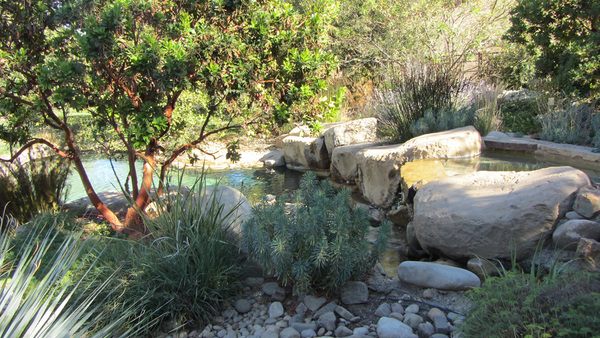
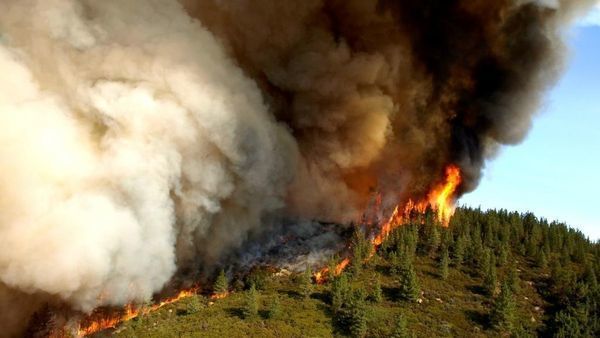

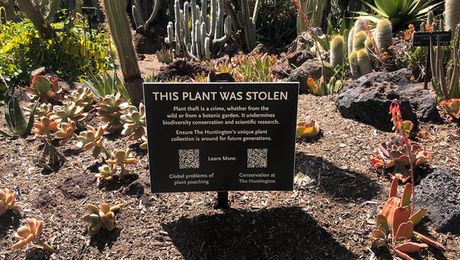











Comments
amazing flowers.
lovely
amazing
graceful
Log in or create an account to post a comment.
Sign up Log in